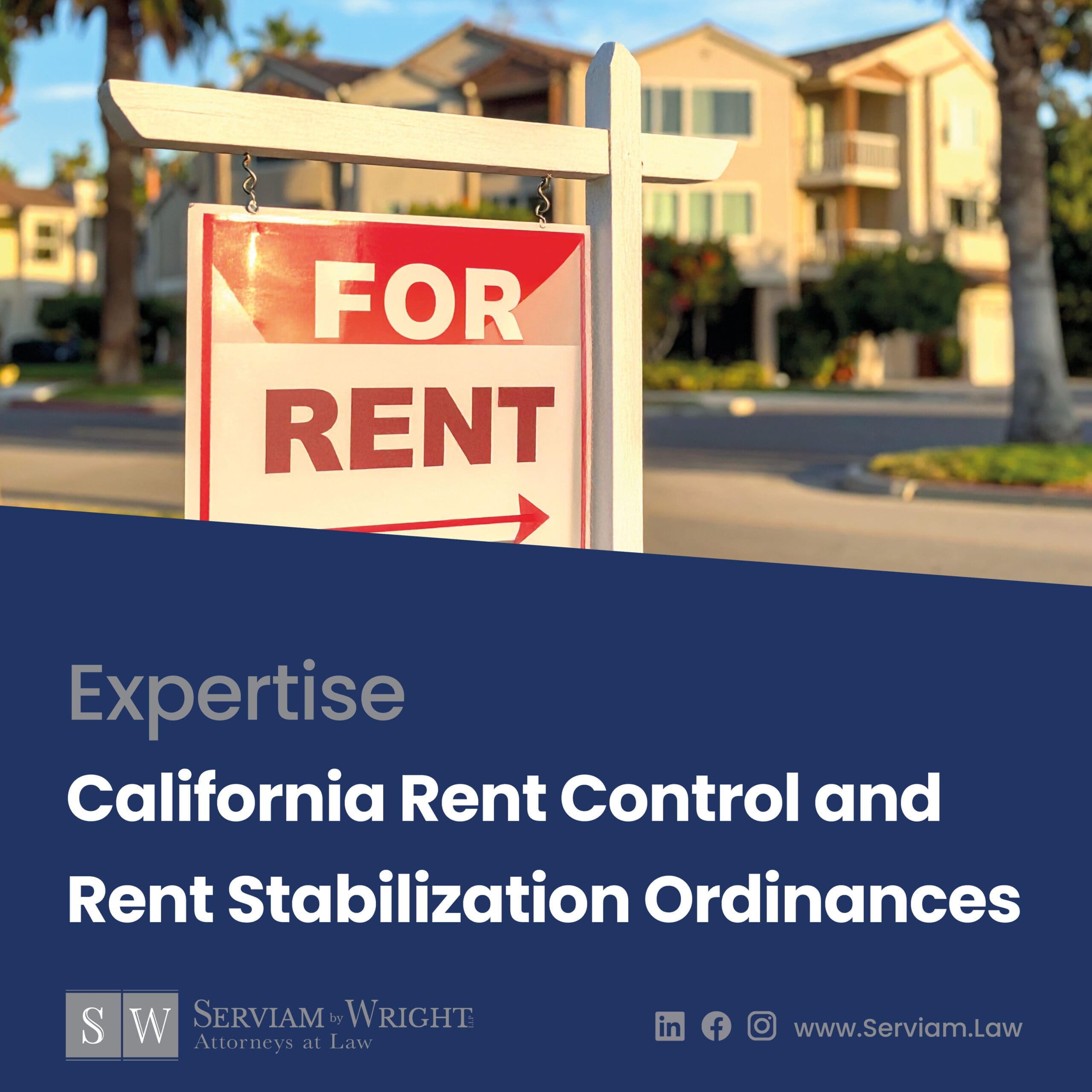Rent control has long been one of California’s most debated housing policies, balancing tenant protection with property owner rights. In recent years, the framework for rent stabilization has shifted significantly at the State level—reshaping how local governments approach housing affordability and tenant protections.
Statewide Framework: AB 1482 and Beyond
In 2019, California enacted the Tenant Protection Act of 2019 (AB 1482), the State’s first comprehensive rent control legislation in decades. AB 1482 capped annual rent increases for most residential properties at 5% plus the local inflation rate (with a maximum of 10%), while also establishing statewide “just cause” eviction protections.
This marked a turning point: for the first time, statewide rules set the floor for tenant protections, even in jurisdictions without local rent control ordinances. Local governments could—and many did—adopt stricter protections, but not weaker ones.
Subsequent amendments and clarifications, including updates through 2024 legislation, have continued to refine how these protections interact with local ordinances.
Local Evolution: Rent Stabilization at the City and County Level
Even before AB 1482, several California cities—most notably Los Angeles, San Francisco, Berkeley, and Santa Monica—had long-established rent control programs. These local ordinances typically limited annual rent increases to a small percentage tied to inflation, with additional layers of tenant protections.
Since the adoption of AB 1482, other jurisdictions have followed suit, implementing or expanding rent stabilization programs. Cities like Inglewood, Culver City, Pasadena, and Pomona have recently enacted rent control ordinances, citing rising rents and displacement concerns. Some counties, such as Los Angeles County, have extended rent stabilization protections into unincorporated areas.
For local governments, the shift has created new responsibilities:
- Administration and Enforcement: Cities with new ordinances must now staff rent boards, adopt regulations, and establish hearing officer systems to resolve disputes. At Serviam, Attorney Nicholas Jaime leads our team specializing in hearing officer services, bringing deep experience in administrative law to help ensure hearings are conducted fairly and effectively.
- Interaction with State Law: Local ordinances must be carefully tailored to work in tandem with AB 1482, ensuring that overlapping or conflicting provisions are clearly addressed.
- Balancing Stakeholder Interests: Officials must weigh the interests of tenants facing housing insecurity with those of property owners concerned about long-term investment and maintenance.

Key Trends for Public Agencies
- Expansion of Rent Boards and Hearing Programs—Many jurisdictions are investing in administrative structures to handle petitions, rent adjustment applications, and enforcement actions.
- Increased Litigation and Appeals—As local programs mature, legal challenges from landlords and tenant advocates alike are testing the scope of rent stabilization measures.
- Integration with Broader Housing Policy—Rent stabilization is increasingly seen as one tool among many, alongside affordable housing production, zoning reforms, and tenant relocation assistance.
- Greater Need for Legal Support—Agencies must navigate a growing body of state and local rules, making legal guidance critical for ordinance drafting, enforcement, and defense against litigation.
Serviam’s Expertise in Administrative Hearings
At Serviam, Attorney Nicholas Jaime leads our team of attorneys specializing in hearing officer services. Serviam’s attorneys are experienced and well-versed in administrative law, having conducted hundreds of administrative hearings for public agencies across California in a variety of legal areas.
This expertise is particularly important for jurisdictions implementing or expanding rent stabilization programs, where neutral and knowledgeable hearing officers are essential to ensure fairness, compliance, and public confidence in the process.
The Evolution of Rent Control—Looking Ahead
The evolution of rent control in California underscores the dynamic nature of housing policy. With economic conditions, political priorities, and State legislation continuing to change, local governments remain on the front line of implementation.
At Serviam by Wright LLP, we work closely with public agencies to provide guidance on the drafting, enforcement, and defense of rent stabilization programs. Whether assisting with administrative hearing systems, ordinance compliance, or litigation defense, our Team supports municipalities as they adapt to the changing housing landscape.
This article should not be interpreted as legal advice; please contact a Serviam attorney for a consultation if you need legal advice about a specific matter. For more information about rent control and rent stabilization in your jurisdiction, contact Nicholas Jaime at Jaime@Serviam.Law.





